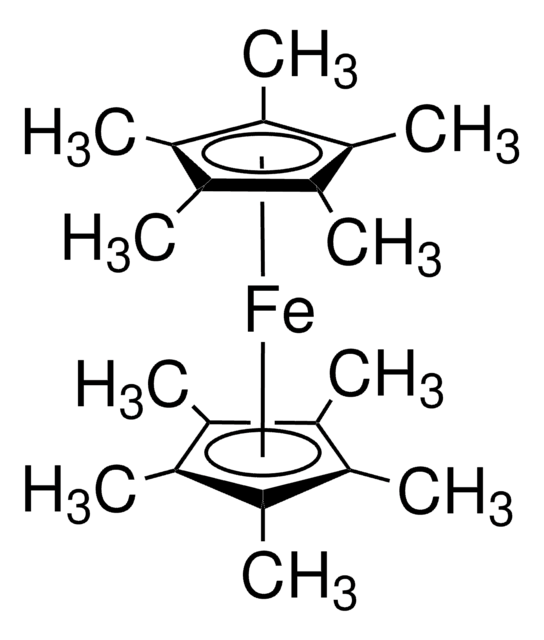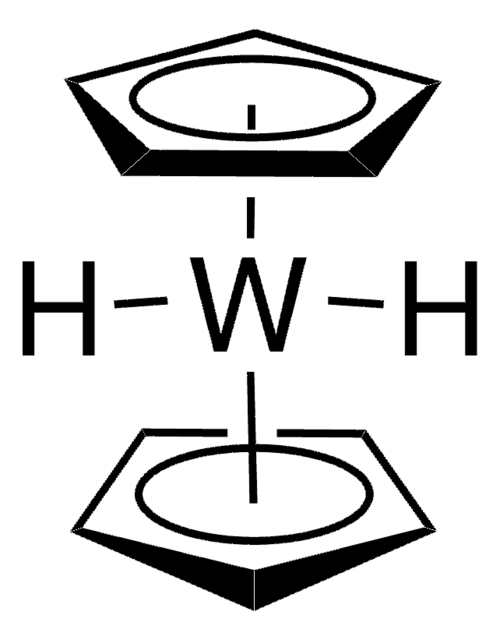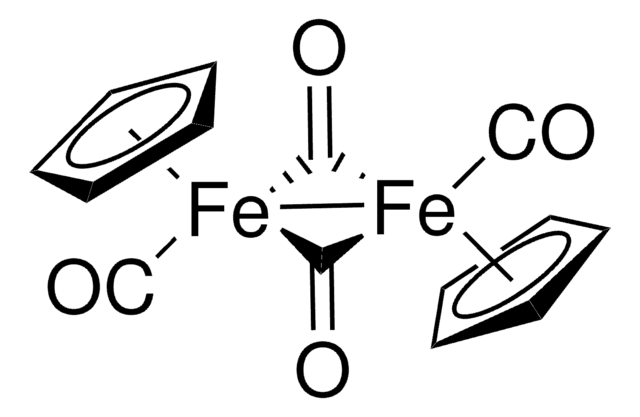339164
Bis(cyclopentadienyl)cobalt(II)
Synonym(s):
Cobaltocene
About This Item
Recommended Products
form
powder or crystals
solid
reaction suitability
core: cobalt
mp
176-180 °C (dec.) (lit.)
storage temp.
2-8°C
SMILES string
[Co].[CH]1[CH][CH][CH][CH]1.[CH]2[CH][CH][CH][CH]2
InChI
1S/2C5H5.Co/c2*1-2-4-5-3-1;/h2*1-5H;
InChI key
PXFGMRZPRDJDEK-UHFFFAOYSA-N
General description
Application
- As a dopant to prepare encapsulated carbon nanotubes with high thermoelectric conversion efficiency.
- As a CVD precursor to fabricate cobalt oxide thin films for various applications.
- As a redox-active anode species in Li-based redox flow batteries to achieve higher energy densities and energy efficiencies.
- As a catalyst for controlled/“living” radical polymerization of methylmethacrylate.
Signal Word
Danger
Hazard Statements
Precautionary Statements
Hazard Classifications
Carc. 2 - Flam. Sol. 2 - Muta. 2 - Resp. Sens. 1 - Skin Sens. 1
Storage Class Code
4.1B - Flammable solid hazardous materials
WGK
WGK 3
Personal Protective Equipment
Certificates of Analysis (COA)
Search for Certificates of Analysis (COA) by entering the products Lot/Batch Number. Lot and Batch Numbers can be found on a product’s label following the words ‘Lot’ or ‘Batch’.
Already Own This Product?
Find documentation for the products that you have recently purchased in the Document Library.
Customers Also Viewed
Articles
Atomic layer deposition meets various needs including semiconductor device miniaturization and nanoparticle coating.
Atomic layer deposition meets various needs including semiconductor device miniaturization and nanoparticle coating.
Atomic layer deposition meets various needs including semiconductor device miniaturization and nanoparticle coating.
Atomic layer deposition meets various needs including semiconductor device miniaturization and nanoparticle coating.
Our team of scientists has experience in all areas of research including Life Science, Material Science, Chemical Synthesis, Chromatography, Analytical and many others.
Contact Technical Service













